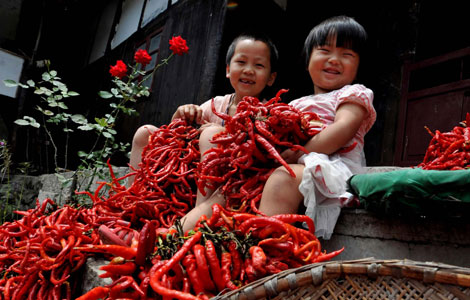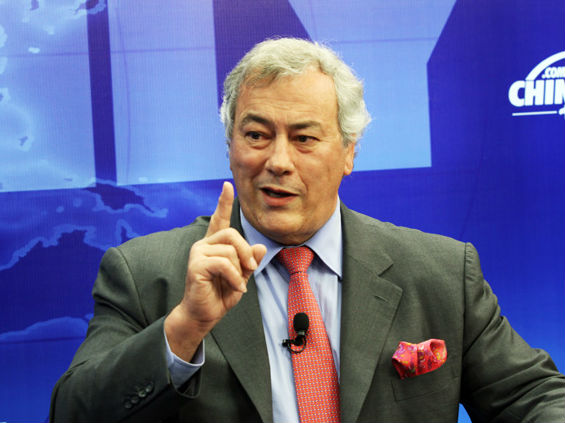Follow Doctor Kotnis' s Footprints: Indian Friends
Updated: 2013-05-21 15:31
(chinadaily.com.cn)
|
|||||||||||
Dwarkanath Shantaram Kotnis is well known in China as a great doctor who came here during the War of Resistance Against Japanese Aggression to provide medical assistance and even give his life for China's cause. Nowadays, he continues to be revered by the Chinese people.
But does he have the same reputation and popularity in India? And what do Indian people think of this doctor? CRI's India-based correspondent Hu Weimin interviewed relatives and friends to ask about their memories of this hero.
 |
|
Indian doctor Dwarkanath Shantaram Kotnis. [File photo/cri.cn] |
Kotnis' s third sister, Manorama Kotnis, and fifth sister, Vatsala Kotnis, live in an inconspicuous building in southern Bombay, India. They still have strong memories of their old brother, who left for China when they were still in their teens. When the two sisters heard Knotis was selected as one of the top ten international friends of China, they were so delighted.
Manorama, now more than 80 years old, said, "I am happy and proud that my elder brother was selected one of the top ten international friends by Chinese people. When he left his family for that remote place, I was only 16 or 17, so I knew little about his choice. What I knew at that time was that he was going to China to help people there fight Japanese aggression, and we family members were worried about him."
After the outbreak of the War of Resistance against Japanese Aggression, the young doctor joined an Indian Medical Mission Team to China. They used to work in Hankou, Yichang, Chongqing, retrieving the dying and treating the wounded under heavy gunfire. They fought many difficulties and set foot on nearly all the Anti-Japanese Base Areas in Shanxi, Hebei and other provinces. At last, Dr. Kotnis became ill from overwork and gave his life on the anti-Japanese battlefields.
His sisters will remember Kotnis as a beloved brother forever. "I have a deep impression of my brother, though I was only nine when he left for China. He was so gentle to his sisters and taught me reading and writing. I felt fortunate and happy to stay with him," his sister Vatsala recalled.
His sister described Kotnis as friendly and equipped with a deep sense of justice. He built a profound friendship with Chinese people. Besides Kotnis, other members of the Indian Medical Mission Team are also Chinese people's friends. The most senior team member, Dr. B.K.Basu, wrote articles and books about China when he went back to India. He strove for a China-India friendship until the last minutes of his life. When the team leader M. Atal went back to India, he seized every chance to introduce the cause of Chinese liberation in order to help Indian people, especially the young, understand China better. M. Atal's grandnephew, Dr. Navin Atal, was proud of his education about China.
"I learned about Kotnis' s deeds when I was young. He went to China together with the Indian Medical Mission Team, but stayed there alone after the team carried out its mission. He met his wife there, set up his family and had his children in China. He devoted his entire life to the liberation cause of another country, making great contributions to the friendship between two nations."
In fact, many people in India know about the Medical Mission Team and doctor Kotnis. Ravi Dharon, a researcher with the Indian National Institute of Immunology, is quite familiar with the story of Kotnis and his team. He admires the doctor's great life and said,
"Kotnis is honored in India and his story is known to every household. He has made great contributions to the friendship between two nations. It is a pity that the younger generations do not know much about him. Therefore, it is necessary to make his spirit more widely known through activities."
For a long time, China-India relations had hit a rough spot for complicated historical reasons as well as some current issues. Ravi Dharon holds the view that as the two largest populations in the world, China and India should learn from each other and improve together, because that will benefit more people. Insightful people in India also point out that carrying on and developing the spirit of Kotnis would promote the goal of unity, friendship, mutual assistance and common development between the two nations.
"We in the Indian media pay close attention to the China-India relationship. However, it's regretful that there are always inflammatory and sensitive remarks, and fewer positive words that benefit friendship and mutual understanding. In this situation, it is getting more important to carry forward doctor Kotnis's great spirits," said Md.Omer Frooq, working with a foreign media organization in Bangalore, India.
In order to continue and develop the spirit of doctor Kotnis and the Indian Medical Mission to China, China and India launched the "United Medical Team" in 2008, which dispatches outstanding young doctors to give volunteer medical consultations in poor areas of the two nations.
S.Anuradha felt proud to be one of them and was impressed by what she experienced in Tang County of north China's Hebei Province. She said, "I went to Bejing, Shijiazhuang and Tang County and other places with the Indian medical team. We went where Kotnis used to live and paid visits to the people there. They were very zealous. The China tour impressed us very much."
Doctor S.Anuradha understood China better by providing medical care to Chinese people. Together with her team members, she has built up a profound friendship with Chinese people. She noted that as a doctor, she would like to follow in Kotnis' s footsteps and contribute to the friendship between China and India.
Today's Top News
China, India can build trust: Premier Li
First-tier cities barely livable, report says
Massive blast claims 13 in Shandong
Fight on drug smuggling for nation
China most financially secure country
Tajikistan president visits China
Voyage to Mars has its skeptics
Premier visits Gandhi's tomb
Hot Topics
Lunar probe , China growth forecasts, Emission rules get tougher, China seen through 'colored lens', International board,
Editor's Picks

|

|

|

|

|

|





